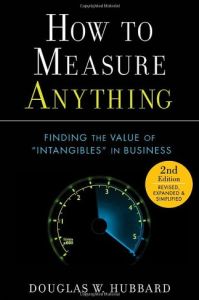
Recommendation
Finding the answers to most questions usually begins with measuring. But when it comes to answering questions that plague business and society – Will this new product succeed? Will that company fail? How valuable is a human life? – the usual tools of measurement fall short. Metrics expert Douglas W. Hubbard offers a logical, reasoned explanation of how to assign a dimension to anything, especially intangibles or “soft” issues. He makes a strong case for why failing to measure such issues can lead to unsatisfactory or even disastrous decisions. His straightforward approach to the sometimes off-putting field of statistics will appeal to even the most numerically challenged. getAbstract recommends his advice to anyone charged with making critical decisions.
Summary
About the Author
Douglas W. Hubbard is an expert in metrics, decision analysis and risk management. He is the author of The Failure of Risk Management: Why It’s Broken and How to Fix It.








Comment on this summary